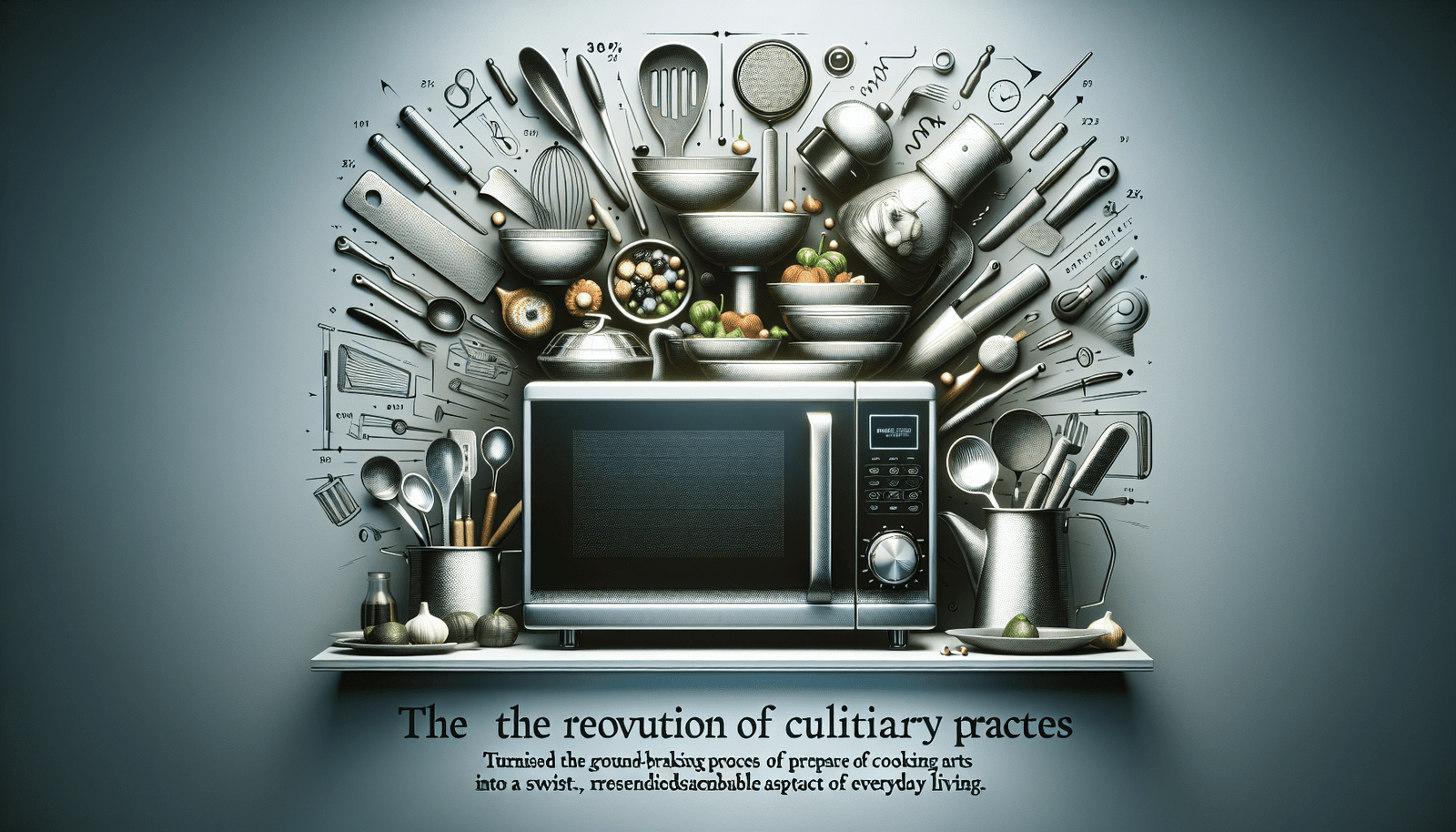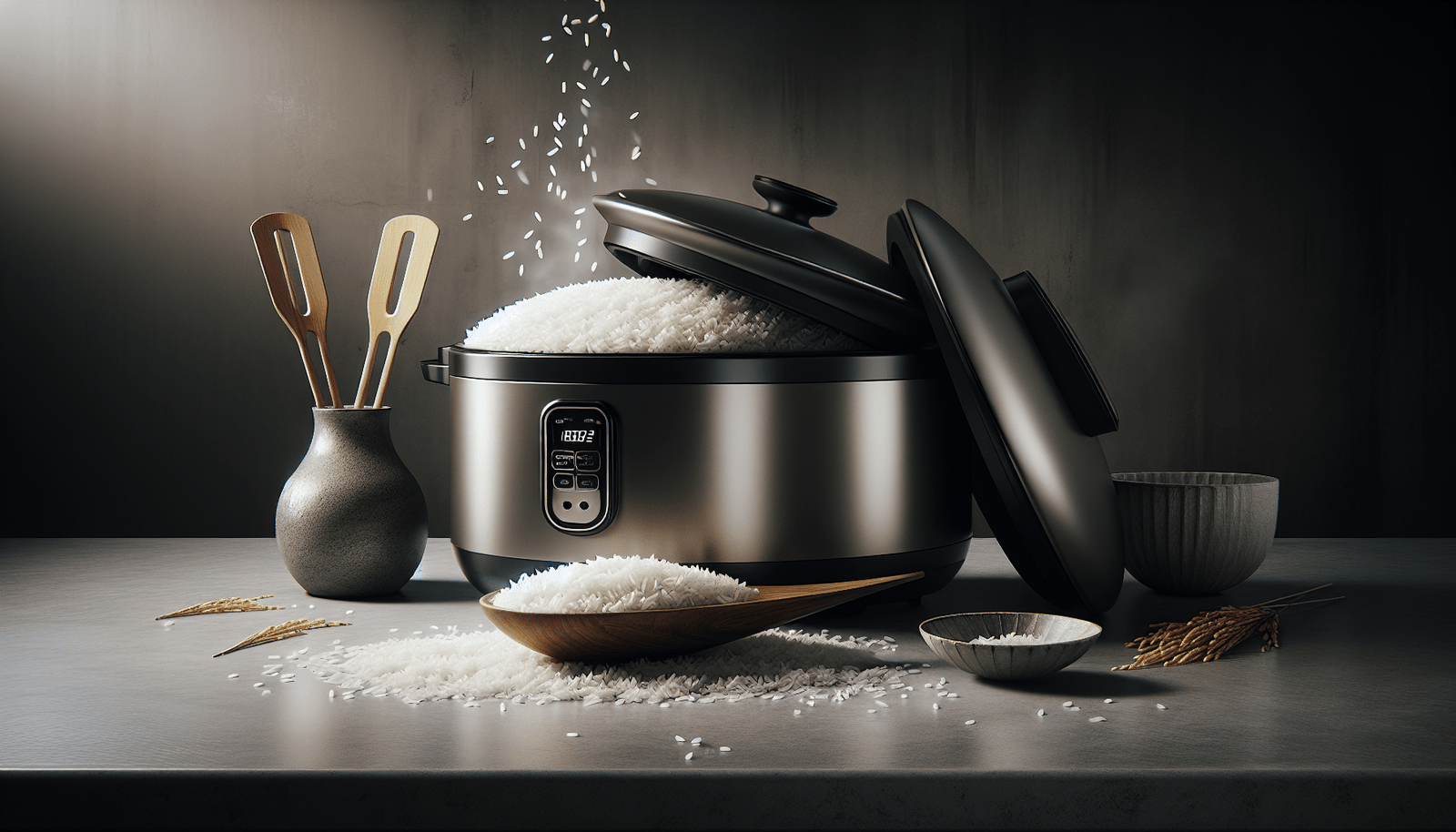Imagine embarking on a journey through the fascinating world of Microwave Ovens: A Culinary Revolution, where the rapid advancement of cooking technology is not just an evolution, but a revolution in the kitchen. As part of the vibrant offerings at Cooking Appliance World, microwave ovens stand out as a testament to how innovative gadgets can redefine our cooking experiences, bridging the gap between fast-paced modern lifestyles and the desire for quality, home-cooked meals. With a commitment to helping you navigate the plethora of choices in kitchen technology, Cooking Appliance World invites you to explore how microwave ovens can simplify your culinary endeavors, making it easier than ever to bring your gastronomical visions to life. Whether you’re a busy professional yearning for quick, nutritious meals or a passionate home chef experimenting with new recipes, the transformative power of microwave ovens is something you’ll truly appreciate.

The Dawn of Microwave Cooking
Historical overview of microwave oven invention
Imagine a world where waiting hours for your meal to cook is the norm. Now, fast forward to the blessing that is the microwave oven, drastically changing our cooking landscape. Your kitchen companion, the microwave, traces its origin back to the 1940s, thanks to Percy Spencer. While working on radar technology, Spencer accidentally discovered that microwaves could cook food, leading to the invention of the first microwave oven. Initially, it was a bulky, expensive machine, primarily adopted by commercial settings. But oh, how times have changed!
Microwave technology explained
Understanding microwave technology feels like unlocking a mystery; it’s surprisingly simple yet fascinating. Microwaves are a form of electromagnetic radiation—yes, the same category as light rays but with longer wavelengths. These waves specifically excite water molecules in food, causing them to vibrate and generate heat. It’s like a mini workout session for water molecules, resulting in perfectly cooked food.
Transition from luxury to household necessity
Initially perceived as a luxury, the microwave oven’s journey to becoming a household necessity is a testament to its undeniable convenience. Over the years, as technology advanced and prices dropped, microwaves found their way into homes worldwide. Today, it’s nearly impossible to imagine a kitchen without this versatile appliance. From reheating leftovers to cooking full meals, the microwave has become an indispensable part of everyday cooking.
Understanding Microwave Technology
How microwaves work
Diving deeper into how microwaves work, imagine them zipping through the oven, interacting with food molecules, especially water. This interaction generates heat uniformly, albeit more on the surface due to penetration limits. That’s your microwave working its magic, making meal prep faster and more efficient.
The science behind microwave cooking
The science of microwave cooking is centered on precision and speed. Unlike conventional cooking, where heat gradually transfers from the surface to the interior of food, microwaving is more direct and efficient. This results in a significant reduction in cooking time and energy consumption, which is fantastic news for your utility bills!
Differences between microwave cooking and conventional cooking
Comparing microwave to conventional cooking reveals significant differences. Microwave cooking is faster, thanks to its direct heating method. However, it might not achieve the same browning and crispiness that conventional methods do. It’s a trade-off between speed and texture, depending on what your meal demands.
Types of Microwave Ovens
Countertop models
Countertop microwave ovens are your go-to for convenience and portability. Perfect for kitchens of any size, they range from compact models for those tight on space to larger versions for the avid cook. Just plug them in, and you’re ready to go—no installation required.
Over-the-range models
Over-the-range microwaves are multitaskers, serving as microwaves and vent hoods. They save counter space by fitting snugly over your stove, efficiently sucking away smoke and odors. While they require installation, their integrated design and functionality make them a popular choice.
Built-in models
Built-in microwave ovens offer a seamless look, integrating perfectly with your kitchen cabinetry. They epitomize the modern, clutter-free kitchen but require a precise fit and professional installation. If a streamlined kitchen aesthetic is your goal, built-ins are your answer.
Convection microwave ovens
Convection microwave ovens are the show-offs of the microwave world, capable of both microwaving and convection cooking. This means you can quickly cook your food using microwaves and then brown or crisp it using the convection feature. It’s a powerful combo for those craving the best of both worlds.

Key Features to Look For
Wattage and power levels
Wattage is crucial—it determines how quickly and evenly your food cooks. Generally, the higher the wattage, the faster the cooking time. Power levels add flexibility, letting you adjust the intensity depending on what you’re cooking. Look for models that give you a wide range of options.
Capacity and interior dimensions
Capacity matters, especially if you’re cooking for a family or entertaining frequently. Interior dimensions are equally important, as they dictate the size of the dishes that can fit inside. You want to ensure your microwave can accommodate your cooking needs without taking up unnecessary space.
Pre-programmed settings
For those who appreciate convenience, pre-programmed settings are a blessing. These settings automatically adjust power levels and cooking times for specific foods, taking the guesswork out of cooking. Whether it’s popcorn, a baked potato, or steamed vegetables, there’s likely a setting for it.
Smart features and connectivity
Welcome to the future, where microwaves are smarter than ever. With features like Bluetooth connectivity and voice control via smart home systems, these modern marvels can streamline your cooking process. Imagine starting your microwave with just a voice command—welcome to cooking convenience in the 21st century.
Innovative Microwave Cooking Techniques
Defrosting
Gone are the days of overnight defrosting. With your microwave’s defrost setting, you can thaw frozen food quickly and safely, making meal prep easier than ever. This feature circulates air to ensure even defrosting, preserving food quality and saving you valuable time.
Steaming
Steaming vegetables in your microwave retains nutrients better than boiling them. Just add a little water, cover, and let the microwave’s steam do the work. You’ll get perfectly steamed veggies in minutes, with all the goodness locked in.
Baking
Yes, you can bake in a microwave! While not traditional, microwave baking is a quick way to satisfy your sweet tooth. From mug cakes to quick bread, the microwave can churn out desserts in a fraction of the time it would take in a conventional oven.
Grilling functions in modern microwaves
Some modern microwaves come with a grilling function, adding a delightful crisp and char to your dishes. This feature transforms your microwave into a mini grill, perfect for when you crave that grilled flavor but can’t use an outdoor grill.
Reheating leftovers
Reheating leftovers is where the microwave truly shines, bringing your meals back to life. Unlike conventional ovens that can dry out food, microwaves can reheat dishes quickly and retain moisture, making your leftovers taste as good as new.
Microwave-Safe Cookware and Utensils
Materials to use and avoid
When microwaving, always use microwave-safe cookware. Glass and ceramic are generally safe bets, while metals and some plastics should be avoided due to safety concerns. Always check for a microwave-safe label to ensure your cookware is compatible.
Benefits of microwave-specific cookware
Microwave-specific cookware is designed to optimize microwave cooking, often featuring steam vents, lids, and handles that stay cool. These features not only enhance cooking efficiency but also ensure safety and convenience in handling.
How cookware affects cooking times and results
The type of cookware you use can significantly impact cooking times and results. Thick, dense materials may require longer cooking times, while lighter, microwave-specific dishes tend to cook more evenly and quickly. Choosing the right cookware can make all the difference in achieving perfect microwave meals.
Health and Safety Considerations
Myths and truths about microwave cooking
Dispelling myths about microwave cooking is important. Contrary to common fears, microwaving food does not “radiate” your food or make it unsafe. When used according to instructions, microwaving is a safe, efficient cooking method that preserves nutrients well.
Safe usage practices
To ensure safety, always follow manufacturer instructions and use microwave-safe cookware. Avoid overheating liquids, which can result in dangerous eruptions. Regularly inspect your microwave for door seal damage and clean it frequently to maintain its safety and efficiency.
Impact of microwaving on food nutrients
Concerns about microwaves destroying nutrients are largely unfounded. In fact, thanks to shorter cooking times and reduced water use, microwaving can preserve more vitamins and minerals than some conventional cooking methods. It’s a nutrient-friendly cooking choice.
The Impact of Microwaves on Culinary Culture
Changing meal preparation habits
Microwaves have transformed meal preparation, making it quicker and more accessible. Busy lifestyles benefit greatly, with minimal prep and clean-up required. This convenience can encourage more home-cooked meals, even in time-constrained scenarios.
Microwave meals and convenience food
The rise of microwave cooking has spurred the development of convenience food designed specifically for microwave preparation. From frozen dinners to ready-to-heat snacks, the variety and quality of microwave meals have dramatically improved, blending convenience with nutrition.
Influence on cooking skills and creativity
Some fear microwaves have negatively impacted cooking skills, but the opposite can be true. With the time saved, microwaves offer the opportunity to experiment and get creative in the kitchen. They can be a tool for learning and innovation, not just a method of reheating food.
Choosing the Right Microwave Oven
Factors to consider based on cooking habits
Choosing the right microwave depends largely on your cooking habits. Consider how often you cook, what types of dishes you prepare, and the size of your household. Do you need a simple model for reheating, or a more advanced one with grilling and baking capabilities?
Comparing brands and models
With numerous brands and models available, it pays to compare. Look for reputable brands with positive reviews. Consider user-friendly features, efficiency, and after-sales support. Your perfect microwave is not just about cooking; it’s also about reliability and satisfaction.
Price versus performance
While budget is an important consideration, balancing price with performance is key. A more expensive microwave might offer superior durability and advanced features that justify the cost. Think of it as an investment in your culinary future, offering returns in convenience, quality, and efficiency.
Future Trends in Microwave Cooking
Advancements in microwave technology
The future of microwave cooking looks bright, with advancements focusing on precision cooking and energy efficiency. Expect to see more features like inverter technology, which allows for more uniform cooking and energy-saving modes, making microwaves even more indispensable in the modern kitchen.
Integration with smart home systems
As homes get smarter, so do microwaves. Future models will likely offer greater connectivity, integrating seamlessly with other smart home devices for a more cohesive and convenient kitchen experience. From remote start functions to maintenance reminders, smart microwaves are set to revolutionize cooking further.
Sustainable and energy-efficient designs
Sustainability is a growing concern, and microwave designs are evolving in response. Future models will aim for reduced energy consumption and eco-friendly materials, aligning with a more sustainable lifestyle. This commitment to the environment is not just good for the planet—it’s also appealing to the eco-conscious consumer.
Microwave ovens, once a symbol of modern convenience, have become a staple in kitchens around the globe. They’ve evolved from simple reheating devices to versatile cooking tools capable of transforming the way we prepare food. As technology continues to advance, the potential for microwave cooking is limitless, promising a future of increased convenience, efficiency, and culinary innovation. Whether you’re a busy professional, a cooking enthusiast, or somewhere in between, embracing the full potential of your microwave can open up a whole new world of culinary possibilities, making every meal an adventure worth exploring.


